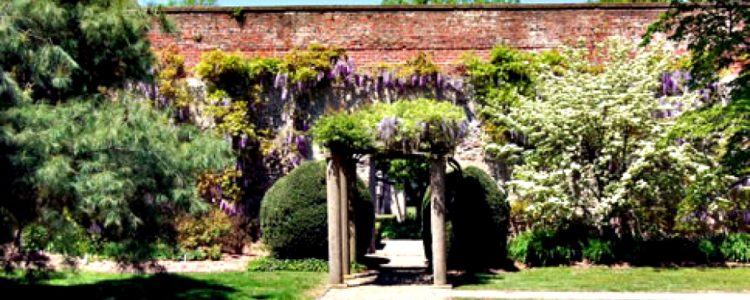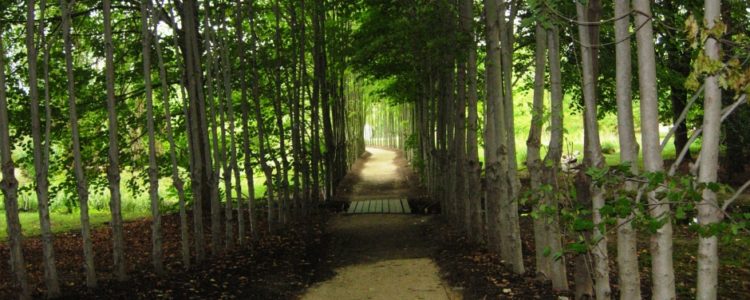I joined the Martha Washington Garden Club for a tour of the house and grounds at Andalusia recently. They remembered that I had been the head gardener at Andalusia during the 1980’s and thought I might enjoy seeing the place again. It was better than returning to my alma mater. Improvements have been made everywhere. The gardens and house are more charming and more interesting than I remembered.
Andalusia is the historic seat of the Biddle family, located on the Delaware River, in Bucks County, just north of Philadelphia. The tour included the grand Greek Revival mansion, affectionately called the “Big House” as well as a tour of the grounds and gardens.
The house and grounds were acquired by Nicolas Biddle in 1814 through marriage to Jane Craig. Five years later, Nicolas Biddle was appointed as president of the Second National Bank of the United States. Nicolas Biddle, a banker, financier, politician, lawyer, and gentlemen farmer was also responsible for writing and publishing the Lewis and Clark journals. Nicolas Biddle was one of the most prominent men in the United States. Historical figures, the likes of President John Quincy Adams, Daniel Webster, the Marquis de Lafayette, and Joseph Bonaparte, were entertained at his homes in Philadelphia and at Andalusia.
The “Big House” holds many treasures collected by generations of Biddles over the past 200 years. A large oriental light brought back from the east by Commodore Biddle, hangs below the wide staircase. The library houses Nicolas Biddle’s extensive library and includes his edition of the Lewis and Clark journals. Floor-to-ceiling windows look out across the rolling lawn to the river from the twin front parlors. Family portraits by Thomas Sully, gifts from Joseph Bonaparte and the Marquis de Lafayette grace the remarkable collection.
The front lawn gently slopes to the Delaware River where you will find the historic Grotto built between 1834 and 1836 as a Gothic “ruin”. The Engine House also sits on the river and was used to pump water to the graperies. It is now used as a boathouse. Walking south along the river reveals the Billiard Room built by Mrs. Biddle so the men-folk would have a separate place to smoke and play billiards. The “Cottage”, a Gothic Revival mansion, is used by family members as a private retreat.
The formal gardens are located behind the Cottage and include perennial gardens on each side of the pool pavilion. You cannot miss the walled garden with its formal rose garden and historical interpretation of the Graperies. The two 17 by 280 foot brick and stone walls were built by Nicolas Biddle in the late 1830’s as the northern supporting walls for glass lean-to greenhouses used to grow grapes. The early 1800’s was a period of experimental farming for many a gentleman farmer. Nicolas Biddle’s pursuits included the first introduction of Guernsey cows to the Americas, growing Mulberry trees in an attempt to develop a silk worm industry, and his eventual success of growing grapes in the glass graperies.
After heavy storms destroyed the glass graperies in the late 1800’s the area between the walls was used for cold frames and vegetable and flower gardens. The crossing pea gravel paths were lined with boxwood that grew to maturity in the 1990’s. After 1933 most of the walled garden became lawn with the exception of the rose garden, still there today. Wisteria vines grace the southern side of each wall in May, around Mother’s Day.
The “Green Walk”, a dwarf conifer garden, the Dog Cemetery and the woodland garden are just beyond the walls. Today Andalusia is used for tours, events and weddings. For more information about Andalusia or to arrange for a tour visit the web at:
http://www.andalusiapa.org/visit/
Or call 215-245-5479

